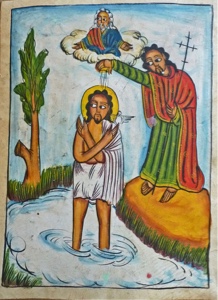The Parable of the Sower concerns a sower who scatters seed, which falls on four different types of ground. The hard ground “by the way side” prevents the seed from sprouting at all, and the seed becomes nothing more than bird food. The stony ground provides enough soil for the seeds to germinate and begin to grow, but because there is “no deepness of earth,” the plants do not take root and are soon withered in the sun. The thorny ground allows the seed to grow, but the competing thorns choke the life out of the beneficial plants. The good ground receives the seed and produces much fruit.
Jesus’ explanation of the Parable of the Sower highlights four different responses to the gospel. The seed is “the word of the kingdom.” The hard ground represents someone who is hardened by sin; he hears but does not understand the Word, and Satan plucks the message away, keeping the heart dull and preventing the Word from making an impression. The stony ground pictures a man who professes delight with the Word; however, his heart is not changed, and when trouble arises, his so-called faith quickly disappears. The thorny ground depicts one who seems to receive the Word, but whose heart is full of riches, pleasures, and lusts; the things of this world take his time and attention away from the Word, and he ends up having no time for it. The good ground portrays the one who hears, understands, and receives the Word—and then allows the Word to accomplish its result in his life. The man represented by the “good ground” is the only one of the four who is truly saved, because salvation’s proof is fruit (Matthew 3:7-8; 7:15-20).
To summarize the point of the Parable of the Sower: “A man’s reception of God’s Word is determined by the condition of his heart.” A secondary lesson would be “Salvation is more than a superficial, albeit joyful, hearing of the gospel. Someone who is truly saved will go on to prove it.” May our faith and our lives exemplify the "good soil" in the Parable of the Sower.



















